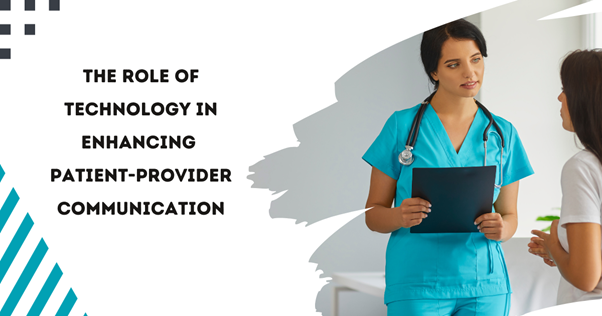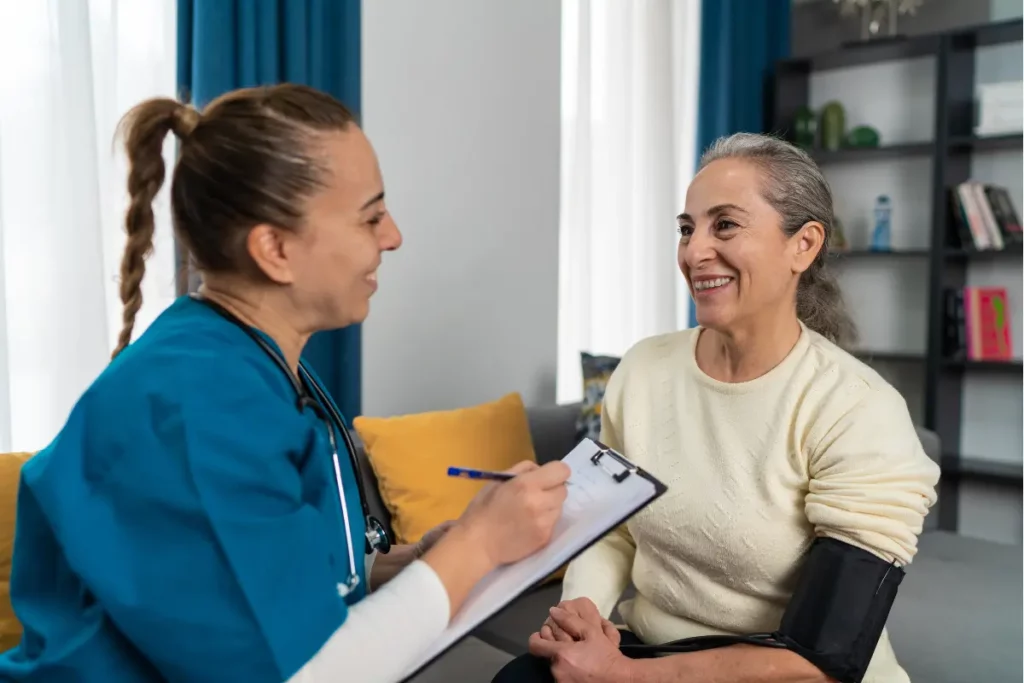In our rapidly evolving world, emerging technologies are revolutionizing patient-doctor communication.
This opens up countless possibilities, allowing patients to connect with their doctors through secure messaging, video visits, and patient portals, instead of being limited to in-person appointments.
These digital tools have paved the way for more seamless and uninterrupted connections, allowing patients to easily raise any concerns between appointments.

How has Tech Changed Patient-Provider Communication?
Furthermore, doctors can now electronically share test results and follow-up information with their patients. This not only saves time and resources but also makes healthcare more accessible, especially for those in remote areas.
These innovative technologies have shattered communication barriers, enabling patients and doctors to exchange vital information and collaborate on care decisions, regardless of location. This goes especially in the 21st century where ehr software features have revolutionized the way doctors interact with patients. Ultimately, this leads to improved health outcomes for all parties involved.
Convenience
New technologies let patients and doctors communicate outside of in-person visits. Patients can send questions at any time using secure messaging apps. Doctors can electronically share test results. This is more convenient than waiting for infrequent appointments.
Continuity
Digital tools allow continuous connections between visits. Patients and doctors can exchange information smoothly over messaging. Such continuity allows for the collaborative management of conditions and treatments over time.
Accessibility
Virtual visits make care more accessible. Patients can meet with doctors through video chat without traveling to offices. This removes geographical barriers to care. Patients who have difficulty with appointments can connect from home.
Collaboration
Technology allows better collaboration between patients and doctors. They can exchange information, ask questions, and discuss care decisions through messages and portals. This leads to shared decision-making and patient empowerment.
Outcomes
With more convenient, continuous access and collaboration, patients are more involved in their care. This leads to better health outcomes, safety, and satisfaction for patients in the modern, technology-enabled healthcare system.
Types of Healthcare Technologies for Communication
Many technologies improve patient-provider communication. Some key examples include:
- Electronic health records (EHRs)
EHRs are digital versions of patient charts. Doctors can use computers and phones to record visits, test results, medicines, and more. This makes it easy to share information
between providers.
- Patient portals
Portals are websites for patients to securely view their medical info online. They can see test results, request prescription refills, message doctors, and schedule visits.
- Telemedicine
Telemedicine uses technology so patients can have appointments by video chat or phone. They don’t have to go to the doctor’s office. This makes care more convenient.
- mHealth applications
mHealth apps help patients manage their health from their phones. They can track fitness, medications, and symptoms, and communicate with doctors.
- Wearable devices
Wearables are technology people can use to track health data like heart rate and exercise. The data is sent to apps to monitor wellness and share with providers.
Each technology enhances communication in different ways.
Electronic Health Records
EHRs are digital documentation systems. They replace paper records in clinics and hospitals. EHRs allow secure storage and sharing of health information. This makes valuable data available to all members of a care team. It also reduces duplication in testing.
EHRs enhance communication by:
- Giving providers quick access to patient histories
- Identifying gaps in care through automated alerts
- Streamlining documentation so providers can focus on patients
Patient Portals
Patient portals are secure online websites. They give patients 24/7 access to their EHRs. Common portal features include:
- Viewing lab/test results
- Messaging healthcare teams
- Scheduling appointments
- Requesting medication refills
Portals enhance communication through:
- Secure written correspondence
- Sharing records and information
- Reducing phone tag
Telemedicine
Telemedicine uses technology to deliver virtual healthcare. Patients and providers communicate through:
- Video conferencing
- Phone calls
- Text messaging
Telemedicine enhances communication by:
- Bringing care to remote patients
- Offering convenient consultation options
- Allowing quick provider access during emergencies
mHealth Applications
mHealth apps use mobile devices to manage health. Types of apps include:
- Education and awareness apps
- Tracking/monitoring apps for fitness, sleep, etc.
- Medication reminder and management apps
- Apps that interface with medical devices
Apps Enhance Communication By:
- Providing education outside of appointments
- Collecting real-time health data to share with providers
- Enabling patients to better manage conditions
Wearable Devices
Wearables are technology worn on the body. Types include:
- Fitness trackers
- Smartwatches
- Continuous glucose monitors
- Cardiac monitors
Wearables enhance communication through:
- Gathering health metrics to identify irregularities
- Monitoring chronic conditions between appointments
- Sending alerts to healthcare teams if readings are abnormal
Benefits of Technology for Patient-Provider Communication
Research shows technology improves communication between patients and providers. Benefits include:
- Increased access to health information
- More efficient appointment scheduling
- Secure messaging with care teams
- Shared access to test results and records
- More accurate remote monitoring abilities
Technology makes valuable health data available in real time. This helps conversations, care coordination, and patient education.
Technology and the Patient Experience
Good communication leads to better patient experiences. Technology gives patients:
- Increased convenience through online access
- Reduced waiting times for appointments
- Quick answers to medical questions
- Ability to prepare for appointments by viewing records
- More control over health management
Providers also benefit from strengthened patient engagement. Studies show technology helps them:
- Develop stronger rapport with patients
- Spend less time on documentation
- Identify patients’ needs earlier
- Involve patients more in care decisions
Challenges of Communicating Through Technology
While beneficial, communicating through technology also poses challenges. Potential issues include:
- The impersonal nature of electronic messaging
- Lag time waiting for responses
- Limitations of virtual visits compared to in-person
- Information overload from tracking data
- Cybersecurity/privacy concerns
However, these challenges can be addressed through training and guidelines. Overall, thoughtfully applied technology enhances communication.
Key Takeaways on Technology and Patient-Provider Communication
- Good communication is essential for quality healthcare.
- Many barriers make effective communication difficult.
- Technology solutions like EHRs, telemedicine, mHealth apps, and wearables help communication.
- Technology provides more convenient options for accessing, sharing, and collecting health information.
- It increases patient engagement, education, and self-management.
- Technology must be used carefully to maximize benefits and minimize risks.
- Training on virtual communication etiquette is important for patients and providers.
When used appropriately, technology can strengthen the patient-provider relationship. It allows more efficient, effective, and satisfactory healthcare communication. This leads to better outcomes, experiences, and overall population health.




